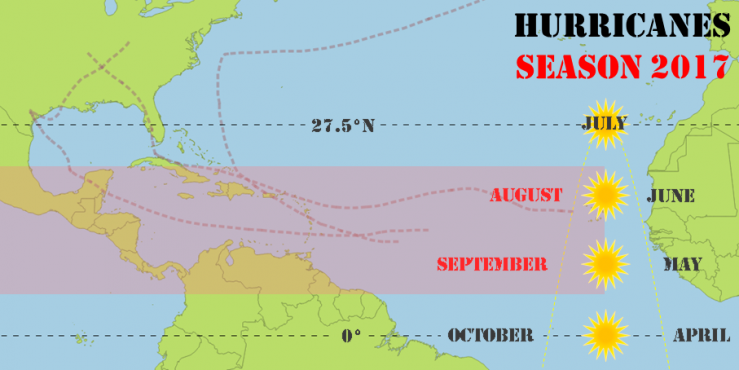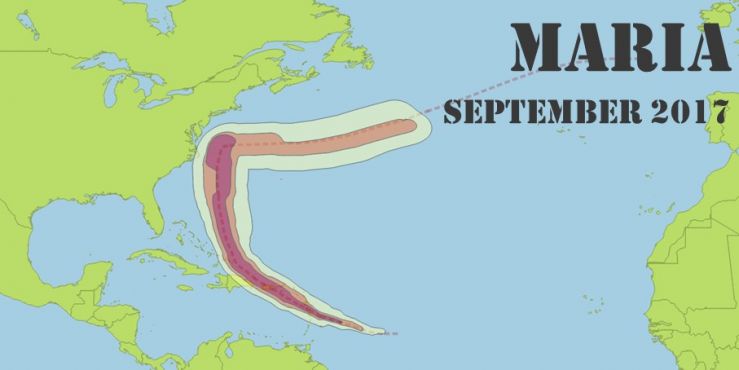Born on African Soils
The hurricanes' cradle is located in the Sahara, which covers most of Northern African. The sun's energy heats up the sand and hence the air above it. Since there is no water within the upper soil layers and also no vegetation that wettens the air by transpiration, the water content in this air layer is almost zero.
Raised by Atlantic Waters
The hot and dry air gets blown onto the Atlantic ocean where it starts taking up as many water as possible. The hotter and dryer the air, the more vapour can be gathered. Thus, the density of air increases rapidly. and gain a very high potential energy on its journey of several thousand miles to its final destination.
Sicced on American Shores
The hurricane's track is almost predestined: common destinations often are the Caribbean Sea, the Gulf of Mexico, or the Florida Keys. Unlike a normal tourist, the hurricane's destiny at its final destination is not enjoying beautiful landscapes rather than devastating them almost completely in an instance.
Spare a Share!
Bilancing hurricane season 2017 looks as follows:
|
Harvey
|
(Aug 2017)
|
$ 125,000,000,000
|
|
Irma
|
(Sep 2017)
|
$ 90,000,000,000
|
|
Maria
|
(Sep 2017)
|
$ 50,000,000,000
|
Two months of hurricanes end up in a quarter trillion US dollars of damage. The question: Can such costs be prevented by investing a little share in advance?
Atlantic first!
The answer: Maybe! Because if the money is invested in the right place at the right time, this investment can pay off later. The task of highest priority is to get to the roots of hurricanes and to fight the problem where it evolves. Thus, if the warming of ocean waters can be reduced, less vapour will ascend into the air by convection. Hence, global warming has to be reduced in general by applying reforestation processes in any possible way to set up further carbon dioxide sinks.
Africa first!
Since CO2 is responsible for the warming of ocean waters, the best pre- or intervention to global warming is to turn plantless into vegetated areas able to uptake and store carbon dioxide. By this, we even do not get to the roots of hurricanes in the first place rather than to the roots of global warming in the very first place. Accordingly, revegetating the Sahara will have another positive side effect: air coming from desert regions will not be as dry and hence no longer that 'thirsty'.











